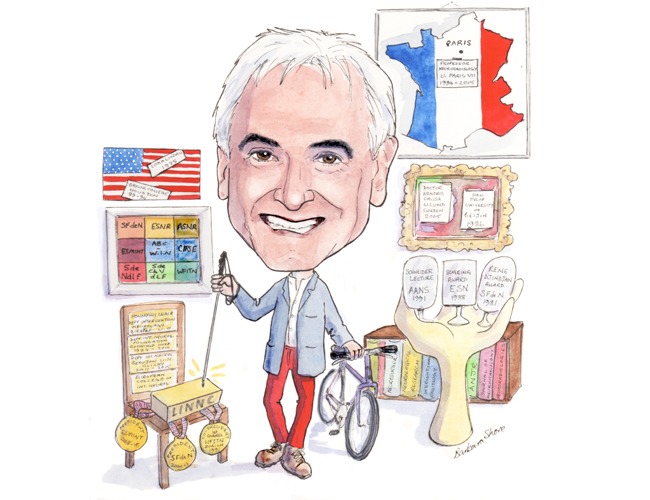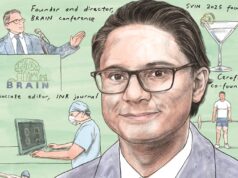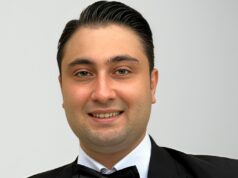 As the course director of the Live Interventional Neuroradiology and Neurosurgery Course (LINNC; Paris, France) Jacques Moret talks about the importance of a live course and about the highlights of the meeting. He also shares the advice that he hopes his mentees will always follow and addresses three questions in interventional neuroradiology that are still in need of an answer.
As the course director of the Live Interventional Neuroradiology and Neurosurgery Course (LINNC; Paris, France) Jacques Moret talks about the importance of a live course and about the highlights of the meeting. He also shares the advice that he hopes his mentees will always follow and addresses three questions in interventional neuroradiology that are still in need of an answer.
What drew you to medicine and neuroradiology in particular?
I wanted to be a doctor since I was in college. I moved to Interventional Neuroradiology (INR) because I had the “vision” that doing surgical procedures without opening the body could be the future. The beginning of Interventional Neuroradiology, which was promoted by Professor Réné Djindjan in France, for spinal cord arteriovenous malformations treatment was the spark!
Who were your mentors and what wisdom did they impart to you?
My mentors were Dr Jacqueline Vignaud and Professor Dominique Doyon. They brought me a very important parameter for my career, which is more than a parameter, it is a real gift; they gave me their confidence and a full freedom. I remember one very important sentence: “Jacques, maybe you are right or maybe you are wrong, but if this is what you want to develop, do it”.
Which innovations in interventional neuroradiology have shaped your career?
Innovations are steps of development and will never stop, but it is not a “shaping tool”, at least for me. The shaping tool is the concept of the so-called “minimally invasive surgery”. The innovations are just the consequences of new therapeutic concepts. However, over the last 35 years, I recognise three major technological innovations: the coils, the flow diverter stents and the phenomenal peri-operative imaging improvement. As far as the concept is the way to progress, I recognise that clearance of cerebral artery using mechanical thrombectomy is the most important evolution for the quality of life of stroke patients over the last ten years.
What was one of your most memorable cases?
One of my most memorable cases is of a one and a half year old baby I treated in 1990 in Beijing for a mural type of Vein of Galen malformation. The procedure went ok and after it, I requested to keep the baby quiet, with control of the blood pressure and heparin treatment. When I came back the next morning, the baby was playing with some other children outside of his room, in a garden of the hospital, with no control at all and no heparin treatment. Last year I got a picture of the baby who is now a strong man in very good shape!
As the course director of LINNC for many years, what do you think is the importance of a live course?
Medicine is an imprecise science where being utterly convinced is frequently perceived as a medical truth, despite the fact that there is no scientific basis! In medicine one can say anything and everything! During live courses lying is not possible! Having said that, live courses must respect the patient and give them the best chance of success, that is the reason why during the LINNC course, the operator has no direct link with the audience, he cannot speak and answer questions at the time of the treatment. A doctor, from the operator’s team in the conference room, speaks and answers in the name of the operator. These are our ethics and I stick to it, without any exception.
At LINNC, a lot of focus is placed on delegate participation and interaction, why is this important?
Interventional neuroradiology has four components: the knowledge of the disease, the knowledge of the vascular anatomy, the practical training (as any surgical procedures) and how to manage a complication. The discussion is open all along, and the sessions are organised as a live forum, which is fed by the flow of questions from the audience, through the “app” of the course. It is a fantastic way to learn and an incredible source of progress for everybody, just because an imprecise science needs gathering of multiple experiences to become more and more reliable.
What are the highlights of LINNC Paris 2016?
This year the highlights will be first of all (as last year) the “stroke treatment”: basically mechanical thrombectomy (results, indications, new perspectives). In addition to stroke, we will focus on new liquid embolic materials for brain arteriovenous malformations treatment, as well as flow study, computerised virtual tools for aneurysm treatment mimicking real practice and “live micro-vascular anatomy” which is the future for the coming five years.
What are your current research interests?
Current research is going towards the screening of the structure of the arterial wall and the structure of the clot. “Live micro-vascular anatomy” is one of the highlights of the LINNC 2016 course, but also one of the research directions.
You have been involved in many studies into new neuro devices throughout your career. In your opinion, what has been the greatest advancement, and how do you see the field of interventional neuroradiology developing in the future?
The answer to this question is a kind of melting pot of the above reported items. I have no doubt that the greatest advancement comes from the five stroke studies that have been published in 2015. It is absolutely unique in the medical literature to have, over a one year period, five randomised studies, which all demonstrate the incredible positive result of mechanical thrombectomy versus thrombolysis. How do I see the field of interventional neuroradiology developing in the future? This is a difficult question because there are parameters that I do not master. What I clearly master is the tremendous potential of development of interventional neuroradiology in terms of concept evolution, and technological innovations. What I do not master at all is the way this fast growing field will be organised by the doctors and the healthcare authority. Interventional neuroradiology is a tremendously attractive “cake” and it arouses a lot of keen interests. I am afraid that those interests push the discipline in a direction where the patients will not be the full beneficiary!
You have mentored and trained a number of physicians throughout your career. What advice do you hope they will always follow?
I hope they will follow and feel my enthusiasm in doing and developing interventional neuroradiology, I hope they will share my happiness teaching them and by the way I hope they will reproduce it when teaching their own pupils. I hope they will behave as scientists being true and good medical doctors and becoming true “medical leaders” instead of becoming “key opinion leaders” which is a pure industrial concept and a hidden way to say “best customers”.
What three questions in interventional neuroradiology are still in need of an answer?
- How to make the guidelines of the WFITN a reality in the medical education and medical organisation.
- How to change the process of the healthcare authority in the analysis of the services rendered to the patients regarding the new devices in order to get the reimbursement in due time.
- How to regulate the distribution of the interventional neuroradiology centres in big cities such as Paris, in order to serve a better medical quality for the patients, understanding that this quality is for a large part related to a large practice.

Fact File
Current position
Professor and honorary chairman of Interventional Neuroradiology, NEURI, the Brain Vascular Center, Bicetre University Hospital, Paris, France
Professional career:
Medical Doctor, (Thesis 1975)
Fellowship in Radiology 1974–1977
Fellow Department of Neuroradiology, Loma Linda University USA (1975)
Board of Radiology (1977) University René Descartes, Paris, France
Full Professor of Radiology, Baylor College of Medicine, Houston, USA (1989–1994)
Former chairman, Department of Interventional Neuroradiology, Foundation Rothschild Hospital, Paris, France (1994–2010)
Former chairman, Department Of Interventional Neuroradiology, Beaujon University, Hospital Clichy, Paris, France (2011–2015)
Honorary chairman, Department of Interventional Neuroradiology at Bicetre University Hospital Le Kremlin Bicetre, Paris (2015–)
Professor of Neuroradiology, University Paris Vii, Faculty of Medicine “Bichat-Beaujon”, Paris, France (1994–2015)
Medical Societies
Member of the Societe Francaise de Neuroradiologie
Member of the European Society of Neuroradiology
Member of the American Society of Neuroradiology
Member of European Society of Minimally Invasive Neurological Therapy (ESMINT)
Founding Member of ABC-W.I.N. (Working Group In Interventional Neuroradiology)
Distinctions
President of ESMINT (2008–2010)
Doctor Honoris Causa of the University of Lund, Sweden (2005)
President of the Societe Francaise de Neuroradiologie (2000–2001)
Co-president of the first congress of the World Federation of Interventional and Therapeutic Neuroradiology, Zurich (1991)
Winner of the “Schneider Lecture” of the American Association of Neurological Surgeons (Cushing Society) (1991)
Winner of the “Schering” Award of the European Society of Neuroradiology (1988)
Honorary Professor of the University Of Beijing (1986)









